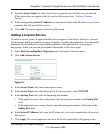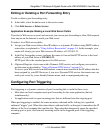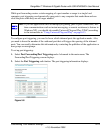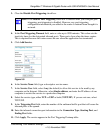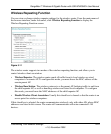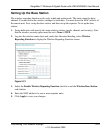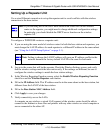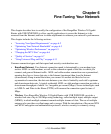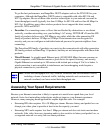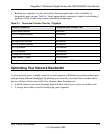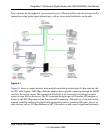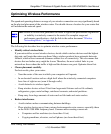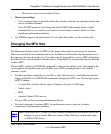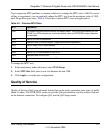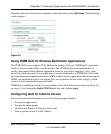
6-1
v1.0, November 2009
Chapter 6
Fine-Tuning Your Network
This chapter describes how to modify the configuration of the RangeMax Wireless-N Gigabit
Router with USB WNR3500L to allow specific applications to access the Internet or to be
accessed from the Internet, and how to make adjustments to enhance your network’s performance.
This chapter includes the following sections:
• “Assessing Your Speed Requirements” on page 6-2
• “Optimizing Your Network Bandwidth” on page 6-3
• “Optimizing Wireless Performance” on page 6-5
• “Changing the MTU Size” on page 6-6
• “Quality of Service” on page 6-7
• “Using Universal Plug and Play” on page 6-13
Common connection types and their speed and security considerations are:
• Broadband Internet. Your Internet connection speed is determined by your modem type,
such as ADSL or cable modem, as well as the connection speed of the sites to which you
connect, and general Internet traffic. ADSL and cable modem connections are asymmetrical,
meaning they have a lower data rate to the Internet (upstream) than from the Internet
(downstream). Keep in mind that when you connect to another site that also has an
asymmetrical connection, the data rate between your sites is limited by each side’s upstream
and downstream data rate. A typical residential ADSL or cable modem connection provides a
downstream throughput of about 1 to 3 megabits per second (Mbps). Newer technologies such
as ADSL2+ and Fiber to the Home (FTTH) will increase the connection speed to tens of
Mbps.
• Wireless. Your RangeMax Wireless-N Gigabit Router with USB WNR3500L provides a
wireless link rate of up to 300 Mbps using technology called multiple input, multiple output
(MIMO), in which multiple antennas transmit multiple streams of data. The use of multiple
antennas also provides excellent range and coverage. With the introduction of the newer WPA
and WPA2 encryption and authentication protocols, wireless security is extremely strong.



